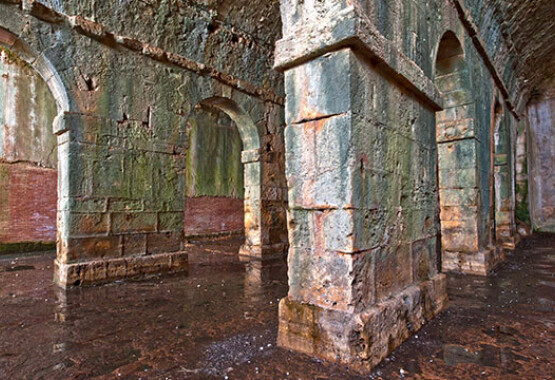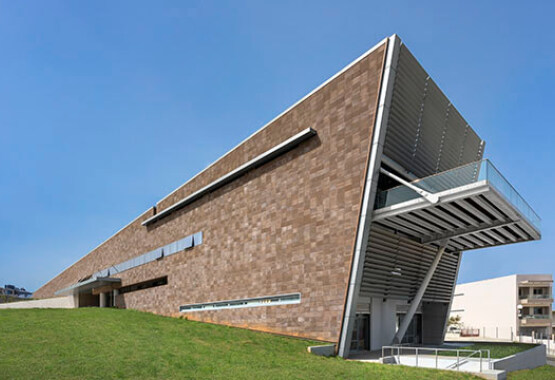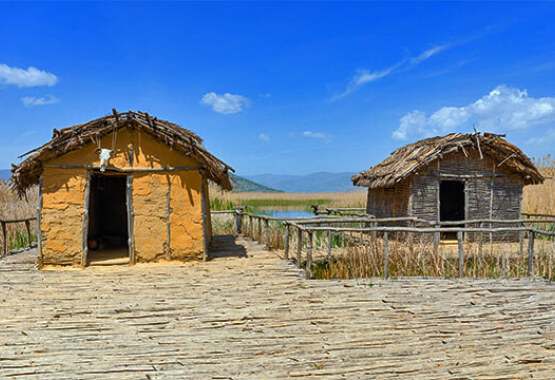
CHANIA
The theatre’s orchestra is one of the smallest ones with a radius of 5.45m, which suggests that it was intended for musical and theatrical performances. Its floor is made of compressed soil and at the centre there is a circular stone base of Thymely, the altar of Dionysus, where sacrifices were offered before each performance. The skene was where the theatrical play unfolded. It had a rectangular structure at the edge of the orchestra, which was located across the koilon. The skene that you can observe today in Aptera was built during the Roman Empire. On the east and west of the theatre are the entrances called parodoi.
The stone-paved streets at the easternmost side of the theatre are of great significance and date back to the Hellenistic Period. Its total length is of 55m with a maximum width of 1.60m. It served as an access to the orchestra from the eastern entrance.
From the excavations it was concluded that the staircase located east of the upper part of the theatre, known as epitheatron, was also used by other public buildings of the city that were located near the theatre, including sanctuaries. The main construction phases of the Aptera Theatre are considered to be during the Hellenistic Period, Roman I and Roman II Eras.
Ancient Theatre of Aptera
The theatre always played an important role in the public life of the ancient cities. In ancient Aptera the theatre is built at the southernmost side of the site, looking towards the White Mountains (in Greek: Lefka Ori). The most significant parts of the theatre are the koilon (auditorium), the orchestra and the skene. Its total capacity is estimated to have been 3.700 spectators.The theatre’s orchestra is one of the smallest ones with a radius of 5.45m, which suggests that it was intended for musical and theatrical performances. Its floor is made of compressed soil and at the centre there is a circular stone base of Thymely, the altar of Dionysus, where sacrifices were offered before each performance. The skene was where the theatrical play unfolded. It had a rectangular structure at the edge of the orchestra, which was located across the koilon. The skene that you can observe today in Aptera was built during the Roman Empire. On the east and west of the theatre are the entrances called parodoi.
The stone-paved streets at the easternmost side of the theatre are of great significance and date back to the Hellenistic Period. Its total length is of 55m with a maximum width of 1.60m. It served as an access to the orchestra from the eastern entrance.
From the excavations it was concluded that the staircase located east of the upper part of the theatre, known as epitheatron, was also used by other public buildings of the city that were located near the theatre, including sanctuaries. The main construction phases of the Aptera Theatre are considered to be during the Hellenistic Period, Roman I and Roman II Eras.




